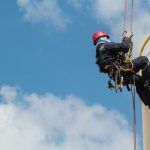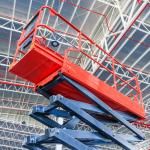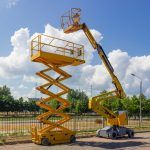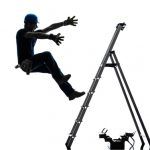
Top 5 Safety Mistakes When Working at Heights
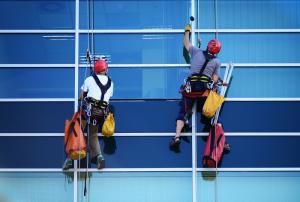
Working at heights remains a significant risk factor for workplace injuries. Worker falls from ladders and poorly secured fall protection equipment continue to be a major cause of major injuries and workplace fatalities.
When it comes to safety training and awareness, working at heights needs to be one of the primary areas of focus if any employee is required to work more the 3 meters off the ground. In this article we’ll explore the top 5 mistakes that are made in the workplace with regards to working at heights.
When Working at Heights, Even Small Mistakes Can Result in Serious Injuries or Fatality
Common injury scenarios include falls from ladders and through surfaces that have open sections or are too fragile to support the weight of workers and/or equipment. A worker performing a job “at heights” means any distance where a fall can lead to personal injury, but occupational health and safety legislation in all provinces and territories across Canada have set the minimum height where work is considered to be done “at heights” is 3 meters.
As you can imagine or are all too familiar with, given the nature of working at heights, one misstep can lead to serious or fatal consequences.
Failure to Assess Risk is a Cause of Accidents
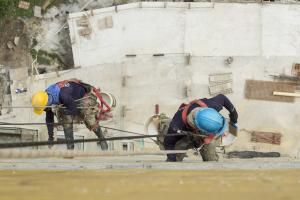 An all-encompassing mistake workplaces make is the failure to properly assess the risks involved with the job. This mistake isn’t just limited to working at heights either.
An all-encompassing mistake workplaces make is the failure to properly assess the risks involved with the job. This mistake isn’t just limited to working at heights either.
The assumption that work done at a certain height (that is greater than 3 meters) without proper training or fall protection equipment is “safe enough” will eventually result in a fall injury.
Risk assessment starts with an examination of the need to send a worker to a potentially dangerous height versus other solutions. The assessment continues with mitigation steps. An example of a mitigation step would include equipment measures such as sturdy scaffolding with guardrails, safety harnesses, or safety nets below the work area to prevent injury in the event of a fall.
Another similar risk failure scenario is to check the roof surface for holes that workers could partially, or completely fall through, areas that could collapse under a worker’s weight, or tripping hazards that could lead to a fall. This is another example situation where the immediate job need is prioritized over the need to always follow procedures and remain compliant with health and safety regulations. To avoid injuries, always assess the risk when working at heights and follow established guidelines in your workplace’s health and safety policy.
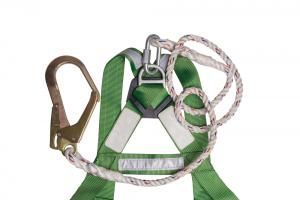
Improper Procedures – Ladders
A very common working at height injury is a ladder fall. Proper safety procedures require making sure ladders are secured using an eye-bolt and ratchet strap. Given there are many ladder types and various height adjustment options, ladders can often require specialized training to include the use of safety lines and other forms of risk protection.
Improper Use of Fall Protection Equipment
As mentioned above, proper use of equipment, such as a fall-arrest harness when working on a ladder, or scaffolding is an important safety measure. The fall will be stopped if a worker falls from a ladder, however proper use requires knowledge of how to put the harness on properly. That requires training. Training in the proper use of the exact type of fall protection equipment that will be used on the job is essential to safely working at heights.

Failure to Maintain Safety Equipment
The maintenance of safety equipment is consistent with the proper use concept. Safety procedures should identify the individuals responsible for keeping the equipment in working condition. Maintenance steps should be clearly documented and tested to ensure equipment is inspected before each use and deemed to be in full working condition. If fall protection equipment is not properly maintained, then it will pose a greater risk of failing when it is needed most – during a fall.
Tasking Untrained Workers
Workers must be trained and certified to work at heights. This includes work at any height that is above 3 meters. Tasking a worker with working at a high altitude without proper training for working at that height, or the fall protection equipment they need to use to remain safe is a recipe for disaster. If the worker doesn’t know how to be safe in this situation, then they are more likely to misuse their safety gear, or conduct themselves in a way that will increase their chances of falling and injuring themselves.
How ACT Provides Working at Heights Safety Training
As long as we have need of work that must be done in high places, we will also have fall risks to deal with.. A safe job completion requires following established safety procedures. Be alert for these five potential mistakes.
Advanced Consulting & Training offers safety training and certification classes for Working at Heights, Fall Prevention as well as consulting services for customized fall safety planning and job site implementation.
Contact us today to find out more.

